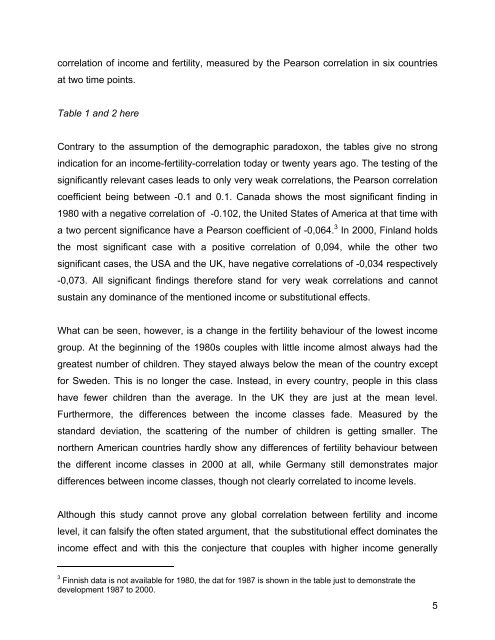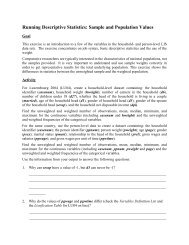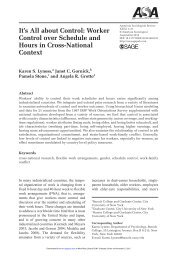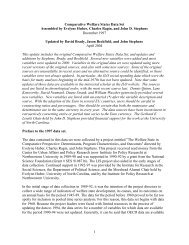Nicola Dickmann: - LIS
Nicola Dickmann: - LIS
Nicola Dickmann: - LIS
You also want an ePaper? Increase the reach of your titles
YUMPU automatically turns print PDFs into web optimized ePapers that Google loves.
correlation of income and fertility, measured by the Pearson correlation in six countriesat two time points.Table 1 and 2 hereContrary to the assumption of the demographic paradoxon, the tables give no strongindication for an income-fertility-correlation today or twenty years ago. The testing of thesignificantly relevant cases leads to only very weak correlations, the Pearson correlationcoefficient being between -0.1 and 0.1. Canada shows the most significant finding in1980 with a negative correlation of -0.102, the United States of America at that time witha two percent significance have a Pearson coefficient of -0,064. 3 In 2000, Finland holdsthe most significant case with a positive correlation of 0,094, while the other twosignificant cases, the USA and the UK, have negative correlations of -0,034 respectively-0,073. All significant findings therefore stand for very weak correlations and cannotsustain any dominance of the mentioned income or substitutional effects.What can be seen, however, is a change in the fertility behaviour of the lowest incomegroup. At the beginning of the 1980s couples with little income almost always had thegreatest number of children. They stayed always below the mean of the country exceptfor Sweden. This is no longer the case. Instead, in every country, people in this classhave fewer children than the average. In the UK they are just at the mean level.Furthermore, the differences between the income classes fade. Measured by thestandard deviation, the scattering of the number of children is getting smaller. Thenorthern American countries hardly show any differences of fertility behaviour betweenthe different income classes in 2000 at all, while Germany still demonstrates majordifferences between income classes, though not clearly correlated to income levels.Although this study cannot prove any global correlation between fertility and incomelevel, it can falsify the often stated argument, that the substitutional effect dominates theincome effect and with this the conjecture that couples with higher income generally3 Finnish data is not available for 1980, the dat for 1987 is shown in the table just to demonstrate thedevelopment 1987 to 2000.5










